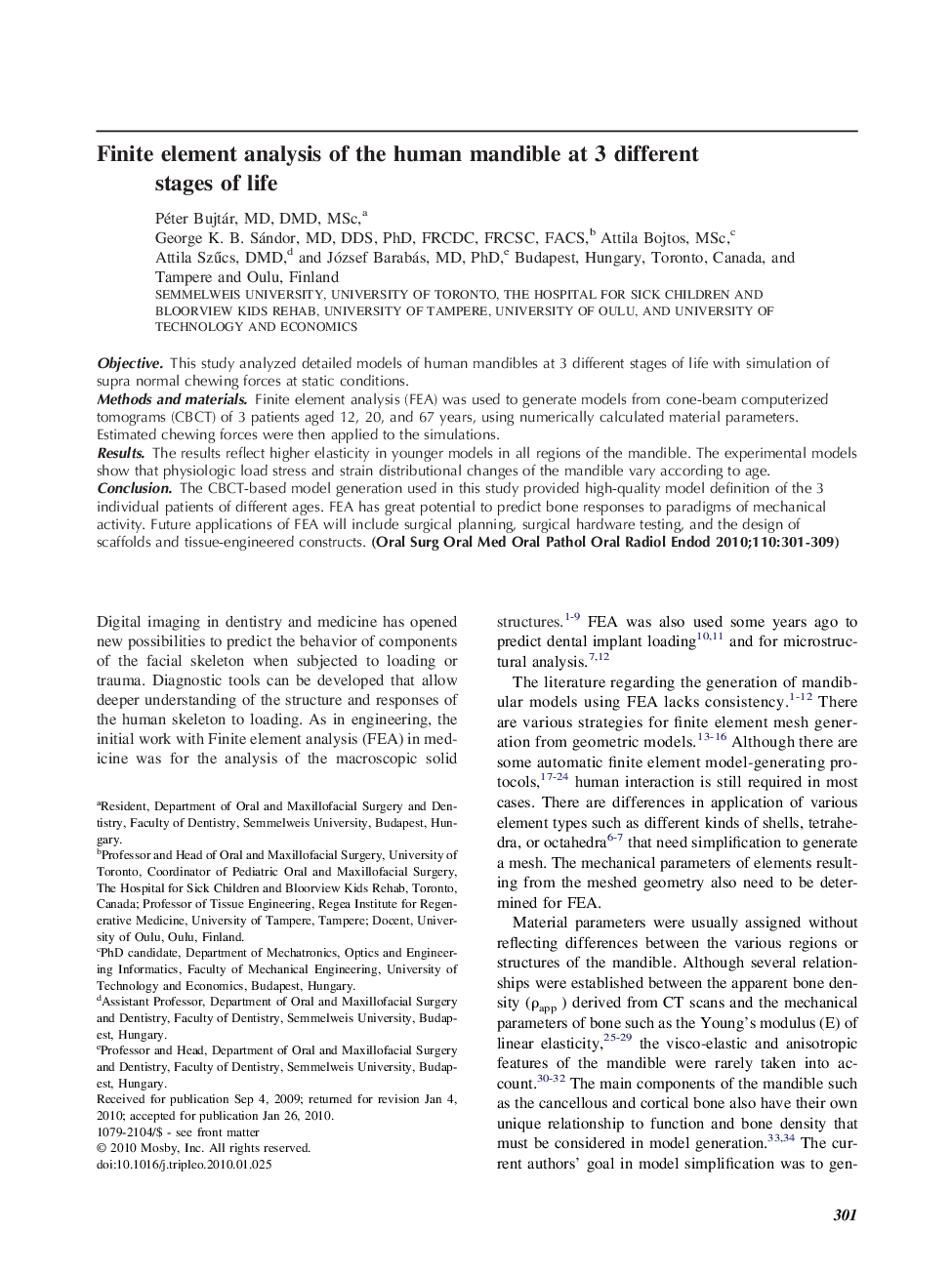| Article ID | Journal | Published Year | Pages | File Type |
|---|---|---|---|---|
| 3167397 | Oral Surgery, Oral Medicine, Oral Pathology, Oral Radiology, and Endodontology | 2010 | 9 Pages |
ObjectiveThis study analyzed detailed models of human mandibles at 3 different stages of life with simulation of supra normal chewing forces at static conditions.Methods and materialsFinite element analysis (FEA) was used to generate models from cone-beam computerized tomograms (CBCT) of 3 patients aged 12, 20, and 67 years, using numerically calculated material parameters. Estimated chewing forces were then applied to the simulations.ResultsThe results reflect higher elasticity in younger models in all regions of the mandible. The experimental models show that physiologic load stress and strain distributional changes of the mandible vary according to age.ConclusionThe CBCT-based model generation used in this study provided high-quality model definition of the 3 individual patients of different ages. FEA has great potential to predict bone responses to paradigms of mechanical activity. Future applications of FEA will include surgical planning, surgical hardware testing, and the design of scaffolds and tissue-engineered constructs.
